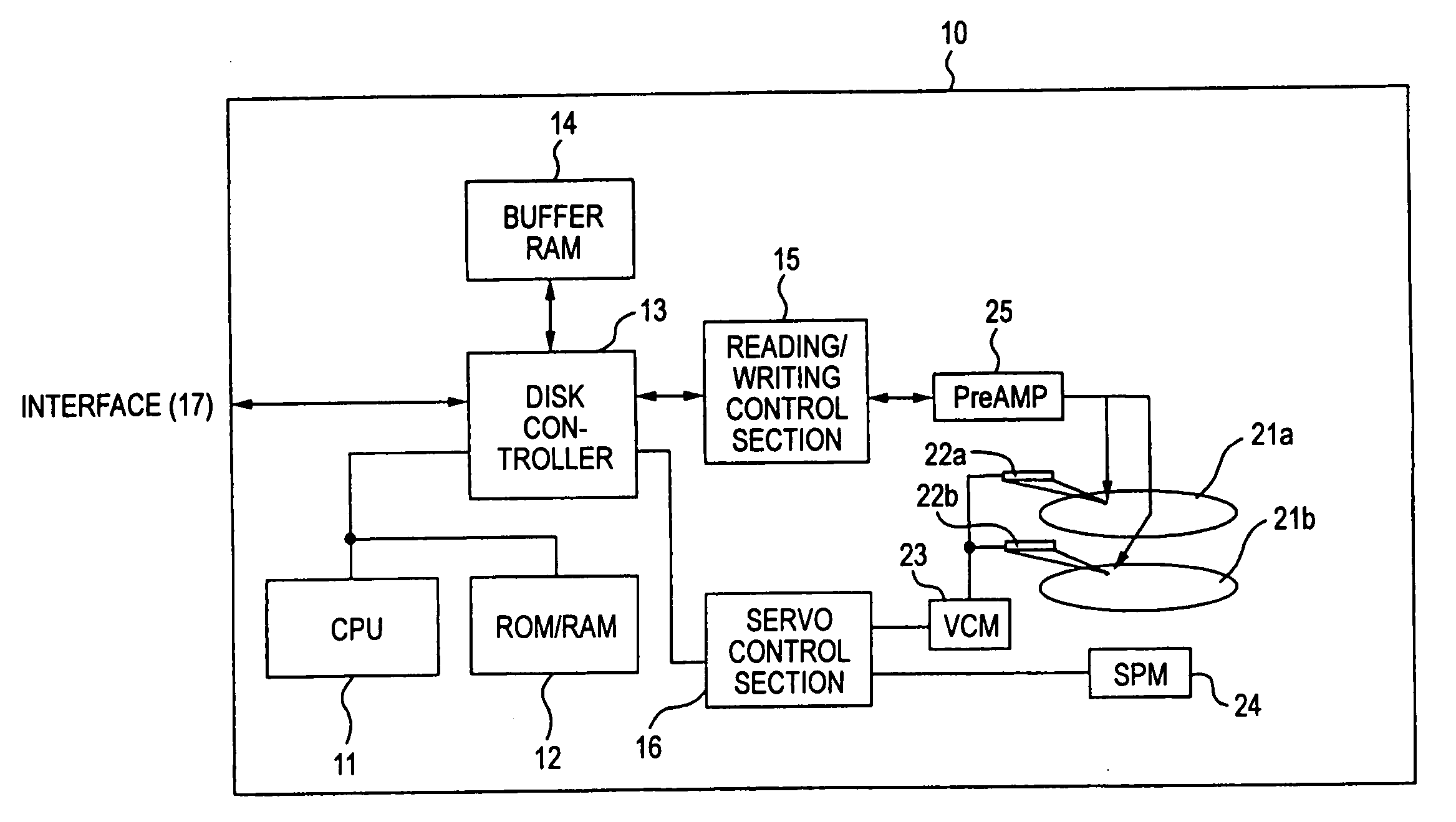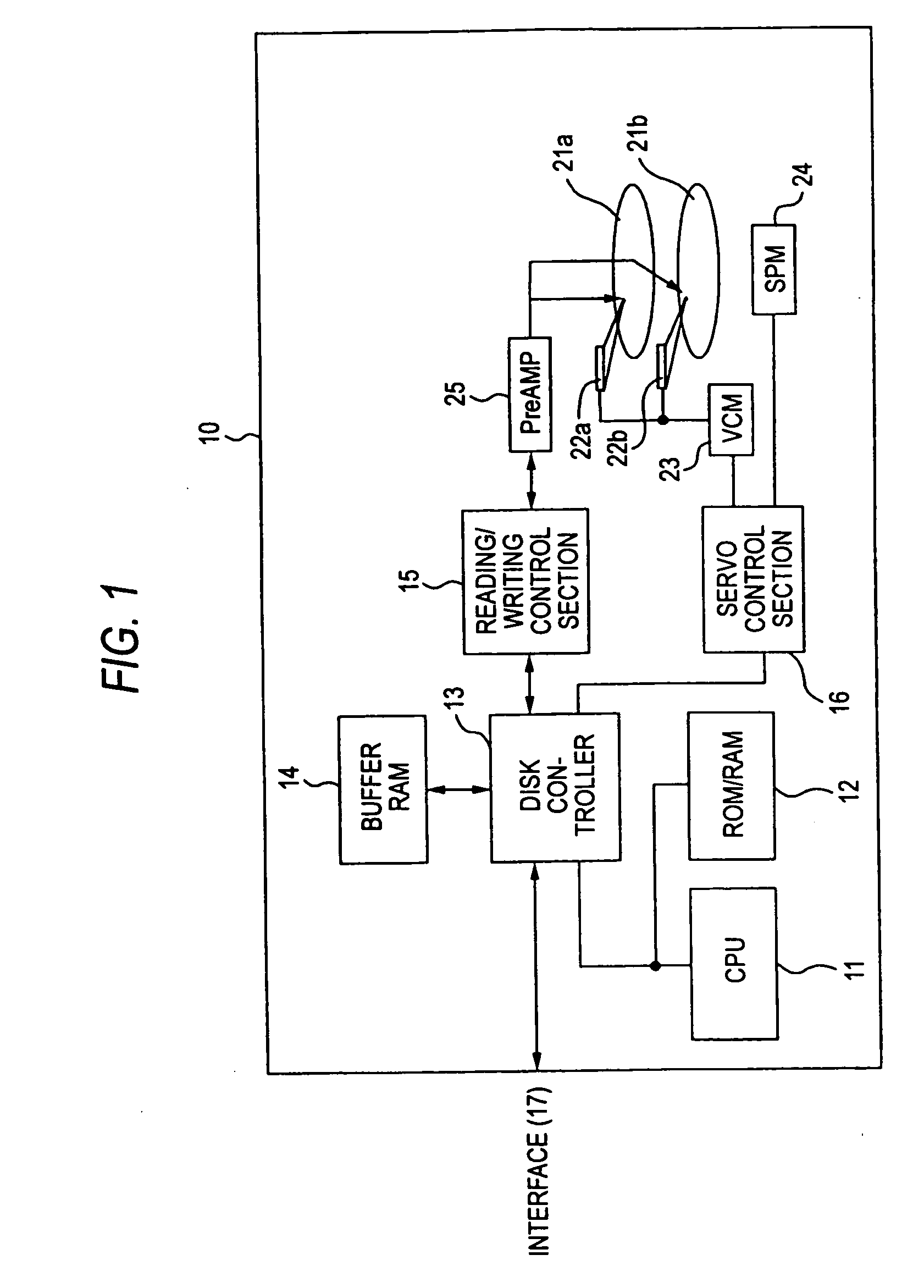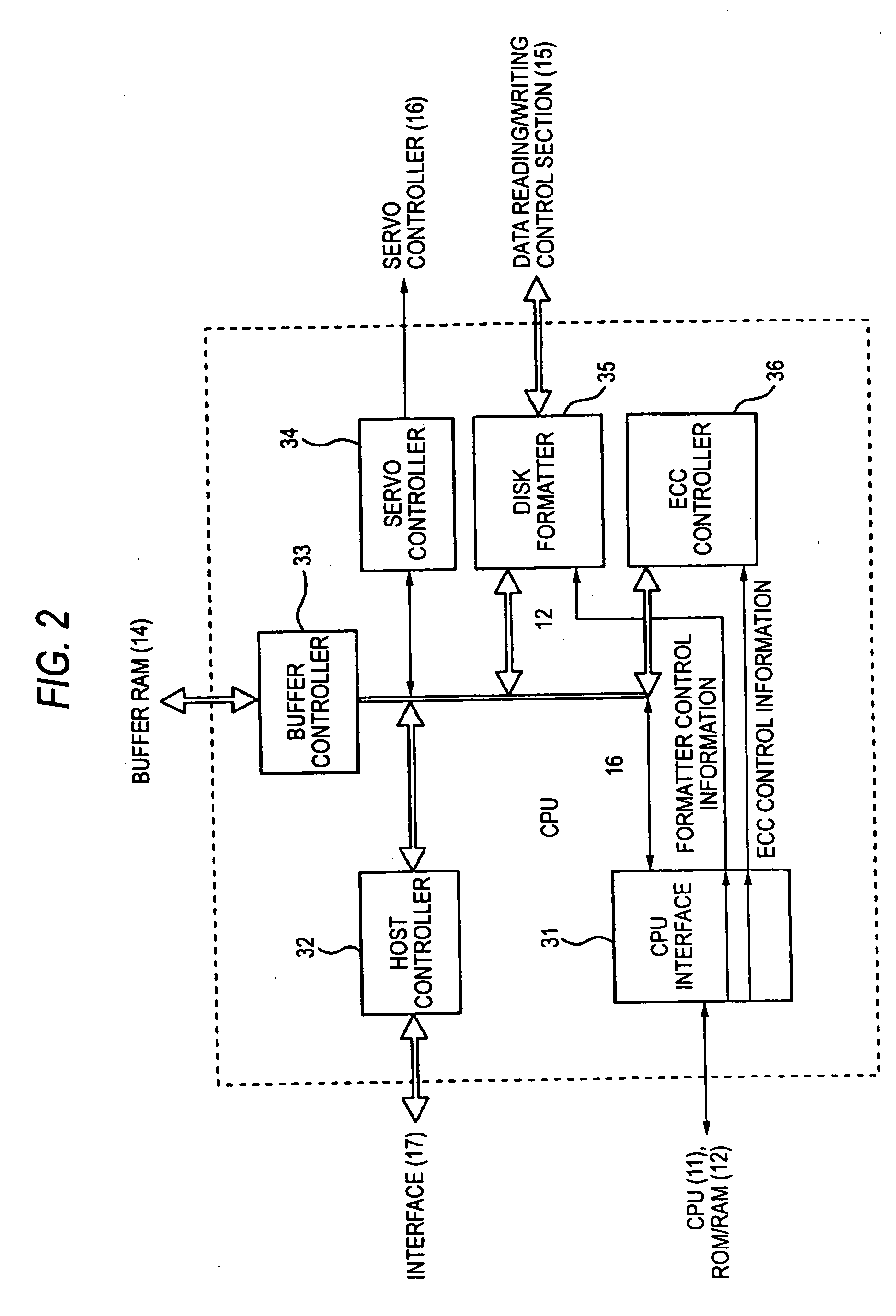Data recording/reproducing system, data recording/reproducing method, program, and recording medium
a data recording/reproducing system and data recording technology, applied in the direction of digital signal error detection/correction, separation process, instruments, etc., can solve the problems of inability to make provision for increasing hard disk capacity, inability to achieve uniform data transfer speed, and limitation of specifiable chs parameters on the side of the main unit of the computer, so as to achieve more stable system, minimize the adverse effects of disturbance, and data reproduction can be performed stably
- Summary
- Abstract
- Description
- Claims
- Application Information
AI Technical Summary
Benefits of technology
Problems solved by technology
Method used
Image
Examples
application example
8. Application Example
[0355] The present invention is not restrictive to the above examples, and surely applicable to various types of cases as follows:
[0356] Exemplified above is the case where the HDD 10 carries two of the magnetic disk 21. The present invention is also applicable to a case where the HDD 10 carries one, or three or more magnetic disks 21. The disk 21 may have front and back sides both being recordable. The number of the magnetic head 22 may vary, but this does not hinder the application possibilities of the present invention.
[0357] Although the disk 21 is often unremovably incorporated in HDDs, the disk 21 may be removable in HDDs. The present invention is still applicable to such cases.
[0358] Further, the present invention is applicable also in disk systems other than the HDDs, e.g., optical disk recording / reproducing system, and magneto-optical disk recording / reproducing system.
[0359] Still further, as to the C2 sector placement, the servo frame locating at ...
PUM
| Property | Measurement | Unit |
|---|---|---|
| speed | aaaaa | aaaaa |
| magnetic | aaaaa | aaaaa |
| physical | aaaaa | aaaaa |
Abstract
Description
Claims
Application Information
 Login to View More
Login to View More - Generate Ideas
- Intellectual Property
- Life Sciences
- Materials
- Tech Scout
- Unparalleled Data Quality
- Higher Quality Content
- 60% Fewer Hallucinations
Browse by: Latest US Patents, China's latest patents, Technical Efficacy Thesaurus, Application Domain, Technology Topic, Popular Technical Reports.
© 2025 PatSnap. All rights reserved.Legal|Privacy policy|Modern Slavery Act Transparency Statement|Sitemap|About US| Contact US: help@patsnap.com



